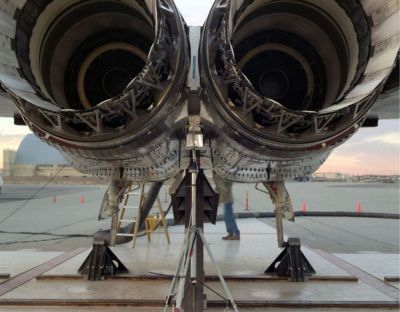Decreasing
dependence on diminishing fossil fuels is a key EU priority that will
also aid in reducing harmful emissions and environmental impact. Novel
propulsion concepts are the subject of intense research activity to
achieve those goals in the aerospace sector.
Hybrid energy sources have been shown to decrease power
requirements. They include distributed propulsion with multiple
propulsive devices or a propulsive fuselage in which the power plant is
fully or partially embedded in the airframe. They take advantage of wake
filling and boundary layer ingestion (BLI) commonly used in torpedoes,
missiles and ships. Systems suck in air at the boundary layer between
projectile and fluid (air or water), re-energising the wake and
minimising kinetic energy loss.
These energy sources have not been investigated through practical
implementation in realistic aircraft systems. The EU-funded project
'Distributed propulsion and ultra-high by-pass rotor study at aircraft
level' (DISPURSAL) was initiated
to fill the gap. Scientists are taking a holistic view, evaluating
component architectures, engine–aircraft integration issues, and overall
impact on aircraft performance and emissions. In the end, they plan to
deliver a technology roadmap for establishing distributed propulsion as a
validated option for enhancing the sustainability of air transport and
of the industry's competitive position.
From an initial pool of potential technologies, the team has chosen a
hybrid wing body with multiple BLI fans on the upper side of the
fuselage to test the distributed propulsion concept. The propulsive
fuselage concept will be tested with an aft-mounted BLI fan that
encircles the fuselage and is powered by a gas turbine in the fuselage
aft cone. The design also includes two modern and fuel-efficient
(ultra-high bypass ratio) turbofan engines installed under the wing for
redundancy.
The effect of BLI was evaluated using computer-aided design data and
comprehensive computational fluid dynamics analyses with promising
results. During the final phase, researchers will optimise designs and
conduct the final evaluation enabling assessment of vehicular efficiency
improvement.
DISPURSAL expects to demonstrate the significant reductions in fuels
consumption and emissions afforded by technologies projected to reach
technology-readiness levels of 6 by 2030.
 EN
EN  CS
CS DE
DE ES
ES FR
FR HU
HU IT
IT PL
PL PT
PT РУ
РУ SK
SK TR
TR УК
УК AR
AR 中文
中文







